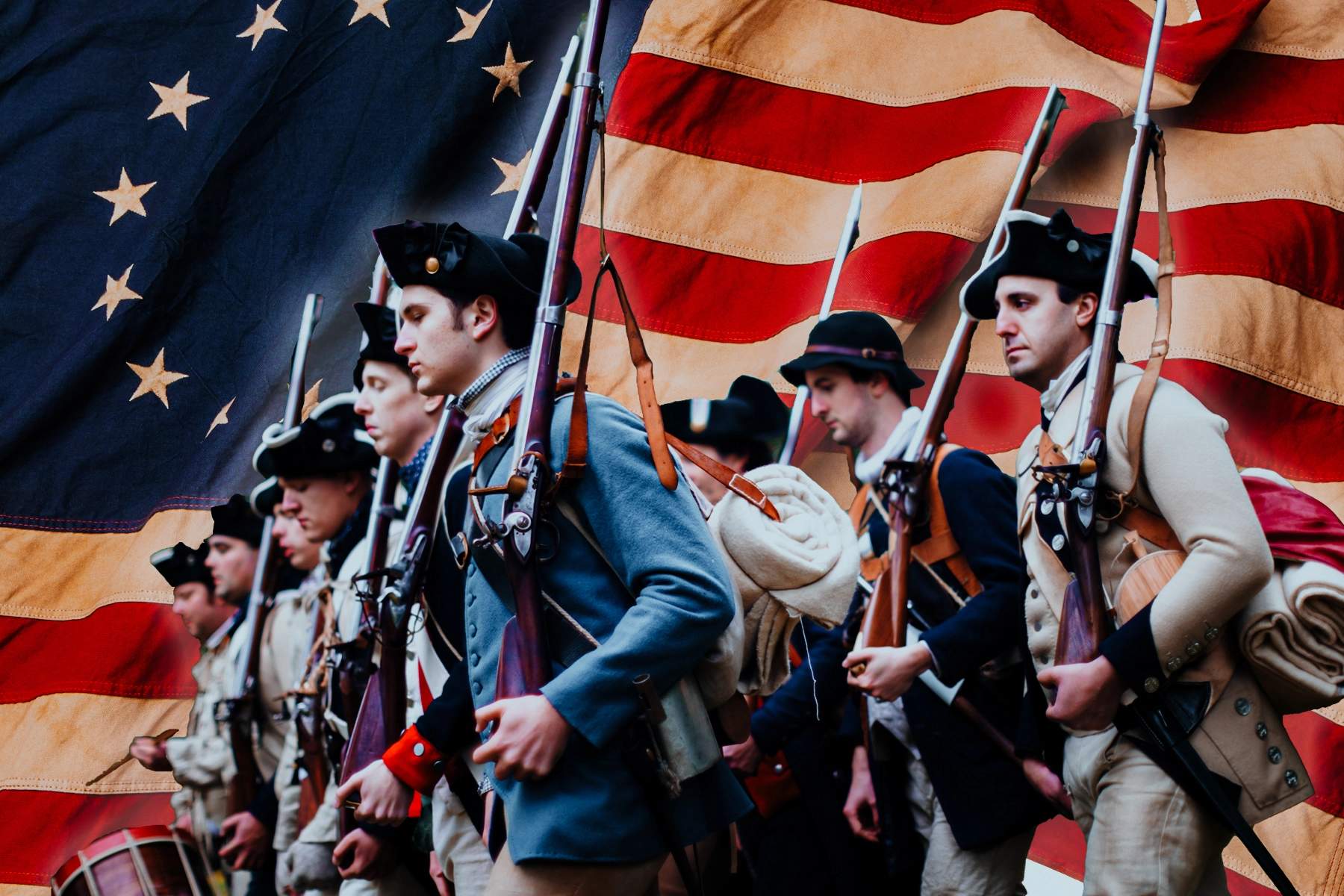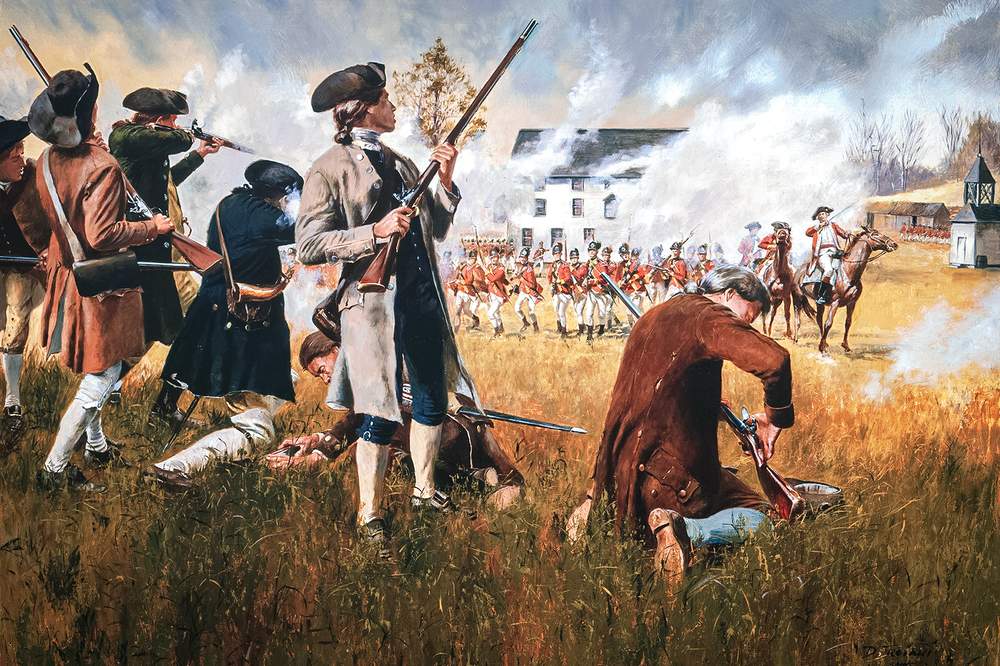April 19, 2025, marked the 250th anniversary of the Battles of Lexington and Concord, which ignited the American Revolution. It was during the brief skirmish in the village of Lexington where the "Shot heard ‘round the world" was fired; by whom or by what firearm remains a mystery. While both Capt. John Parker, who commanded the American militia, and Maj. John Pitcairn, commander of the advance force of British Army soldiers, each ordered their men to hold fire, a trigger was nonetheless squeezed by someone. There has been speculation ever since that the shot came from inside a nearby tavern or from behind a wall. The question will never be resolved, but that hardly mattered by the time the smoke cleared.
The American War of Independence had begun.
Less than two months later, the Continental Congress established the Continental Army, the forerunner of the modern United States Army. George Washington was soon appointed its commander-in-chief, marking a significant moment: For the first time, the colonies would act as a single entity in their fight for independence.
On this, the 249th celebration of Independence Day, we take a look at what those first American soldiers carried: what the weapons and ammo that were their tools of war were like, what their regular kit was like, and how they fought through the harsh conditions of war, even when the bullets weren’t flying.
America's Original Boys in Blue
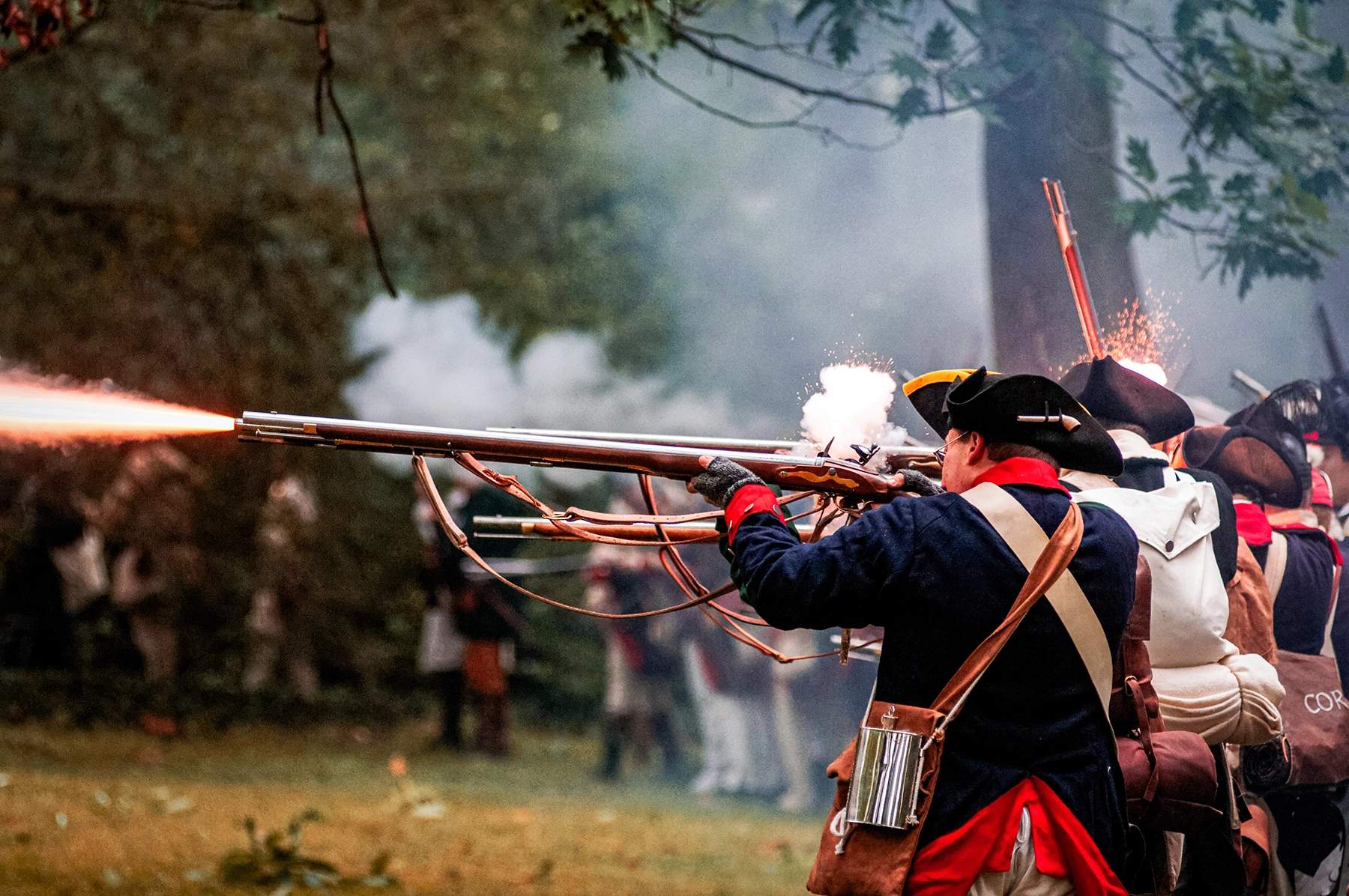
Though it was a "unified" force, at least in theory, the Continental Army couldn't be described as a professional fighting force, at least in comparison with so-called armies of the day. It was initially a mixture of largely untrained state militias composed of soldiers with varying degrees of experience, many of whom had previously served with the British military.
Gen. Washington, who had fought against the French under the British union flag, recognized the need for better training and discipline, but much of that didn't occur until after Baron Friedrich Wilhelm von Steuben arrived at Valley Forge in 1777. The German-born officer had spent 17 years of military service in the Prussian Army, considered one of the most professional and disciplined armies in Europe, and had participated in several battles during the Seven Years' War.
However, it wasn't just training that the early Continental Army lacked.
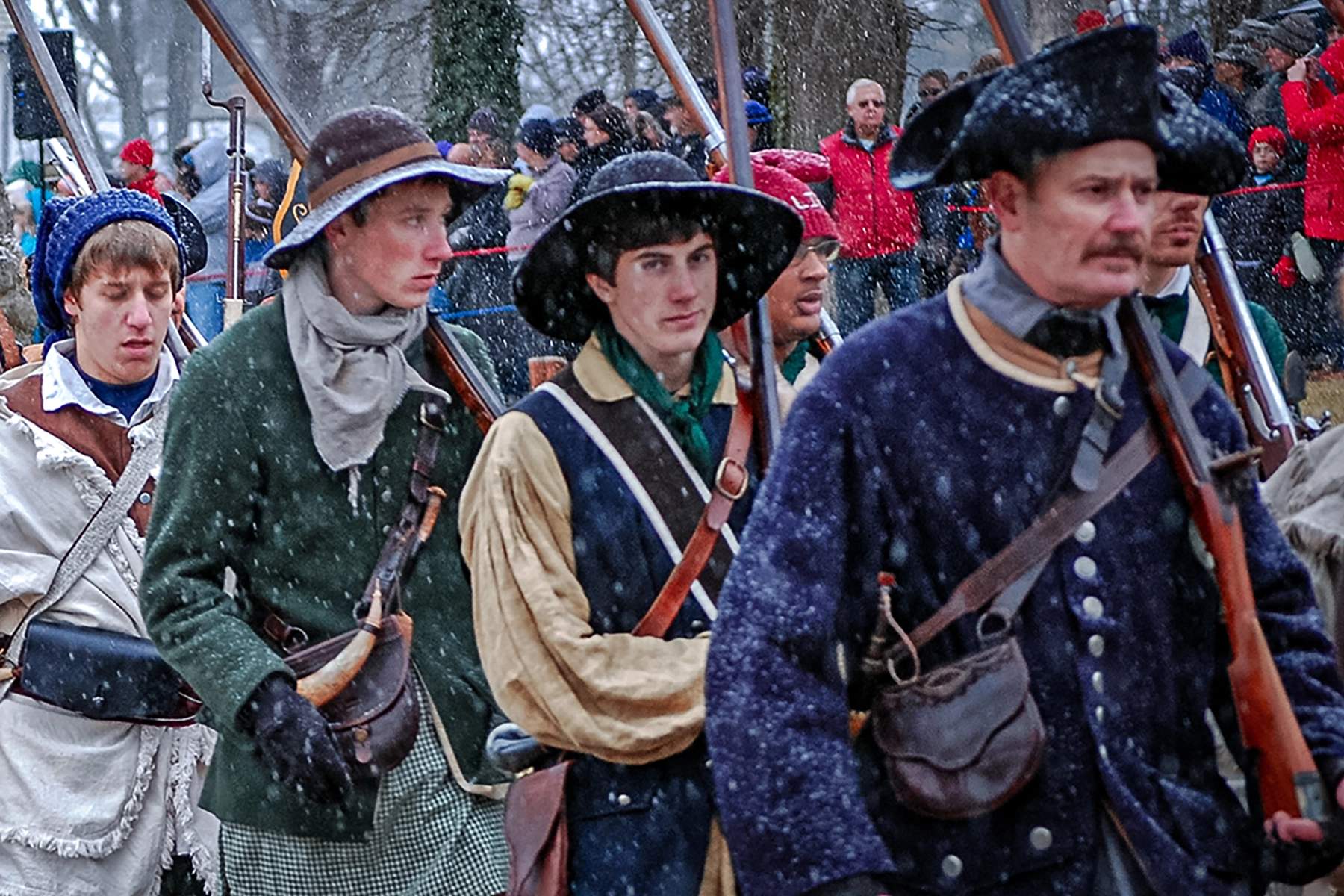
The Continental Army Color Wasn’t Originally Blue
When the Continental Army was initially established, its soldiers had no official uniforms. The Continental Congress soon acted and adopted brown, not blue, as the official color for the uniforms of the new fighting force. That was already a popular color with the New England Provincials.
Various regiments were distinguished by different color collars, cuffs, and lapels, while the cut of the coat was similar to the British, albeit plainer. The plan under Washington was to have the entire Continental Army in uniforms by the beginning of 1776, but this was only partially successful.
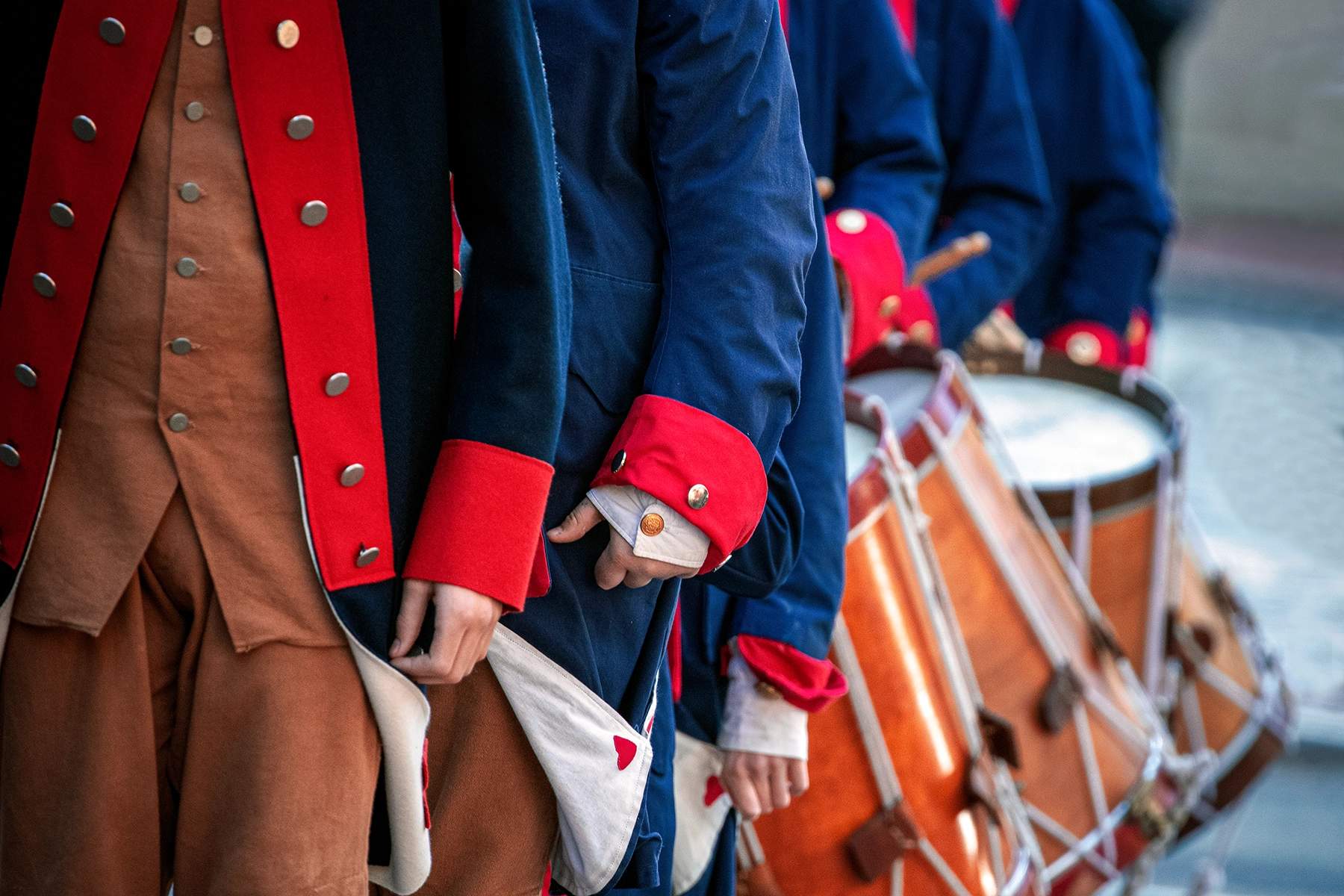
After a few months of campaigning, the earliest uniforms were already worn out, while there were also shortages of brown cloth to replace them. The American textile industry was in its infancy, and efforts were made to source fabric from the Caribbean and France. As a result, many regiments used the colors of blue or gray instead. The use of blue further increased when, in the spring of 1778, a shipment of blue coats arrived from France, but yet again, after a year of campaigning, most were again in rags.
As additional cloth was secured, in October 1779, Washington issued a General Order that formed the basis for the first American dress regulations. The infantry was to be clothed in dark blue with different facings and distinctions to denote the states from which the soldiers hailed. White facings were used for New England, red for the Mid-Atlantic, and a darker blue for the South. Musicians wore uniform coats in reverse color; however, and even today, the Old Guard Fife and Drum Corps wear red coats.
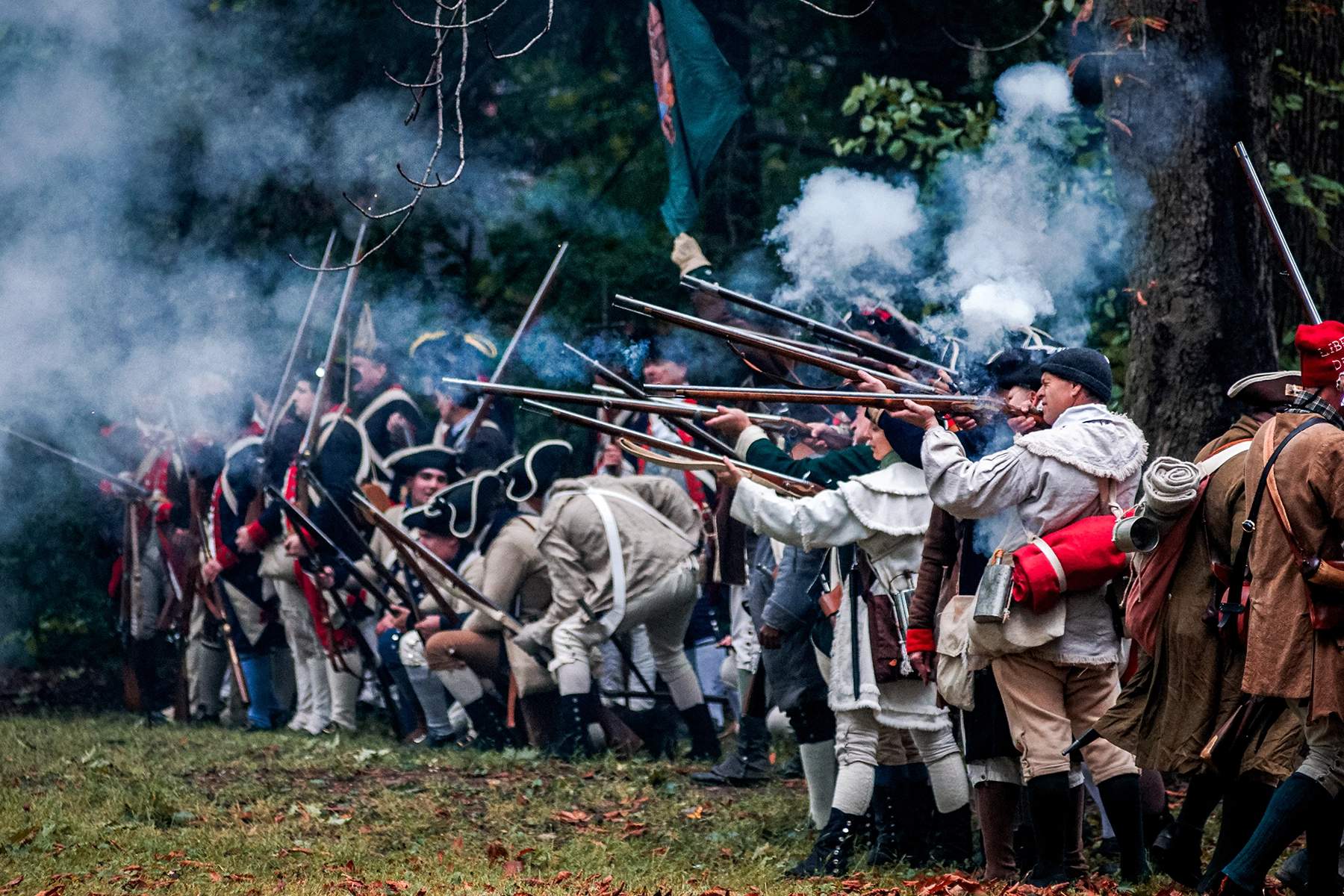
Due to shortages, it was common for some units to wear their hunting dress, which was already an everyday attire among the frontiersmen of Pennsylvania and Virginia. Derived from Native American clothing, and consisting generally of an unbleached homespun or deerskin shirt, fringed deerskin leggings, and moccasins, it became a de facto second uniform for the American forces. Washington requested that around 10,000 sets be furnished for the Continental Army.
Local governments were called to help, turning to the people and, more specifically, to the women who quickly produced the uniforms. Hundreds, perhaps even thousands of hearthstones, wool-wheels, and handlooms began spinning the wool sheared from local farm sheep into these rough uniforms.
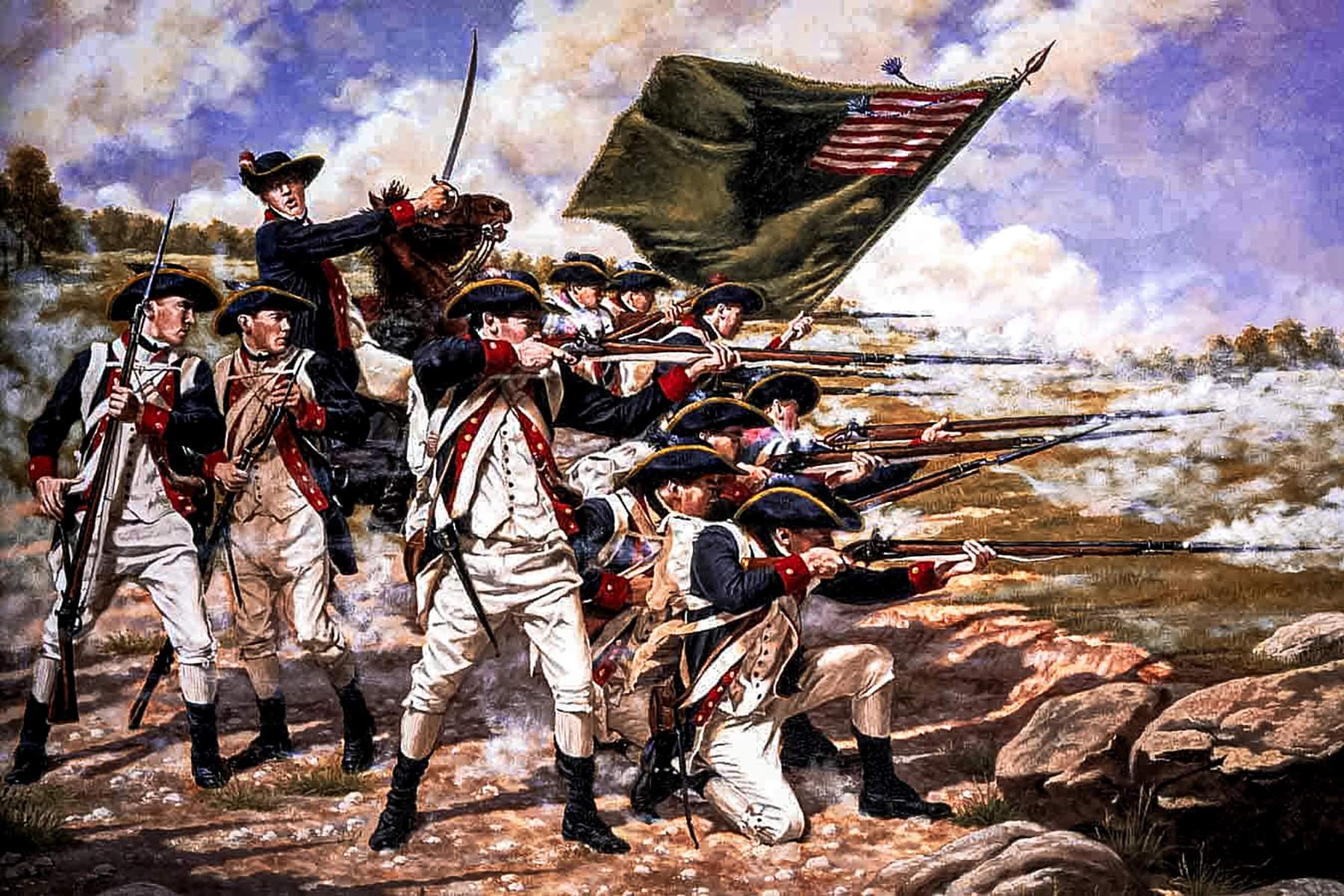
While the British mocked the Continental Army wearing those uniforms as “homespuns,” it was soon claimed by the Americans as a badge of honor.
Revolutionary War Hats and Helmets — Yes, Helmets
As was common in the era, military clothing often followed civilian fashion trends of the day. That included the cocked or tricorn hats that were worn by the major powers, including the Continental Army. There were notable attempts at military elitism, with some field officers attaching red or pink cockades to their hats, while captains displayed cockades in yellow or black. In time, officers would seek to hide their rank, but during the Revolution, it was common for those in charge to want to stand out, as the rules of engagement often discouraged the direct targeting of those of higher rank.
There were several different styles of tricorn hats, but typically these were worn with the front corner directly over the left eye, in part to stay out of the way when the soldier fired his musket (assuming he was right handed).
The tricorn hat was far from the only headdress worn by the Continental Army. Another popular form of headgear was the "liberty cap," a wool knit cap that could be rolled over the ears in the winter. Contemporary illustrations suggest it was common to have the words "Congress" or "Liberty or Death" embroidered on the front. Although it was widely used during the American Revolution, it has become iconic for its association with the French Revolution and was even a symbol of the 2024 Paris Olympic Games.
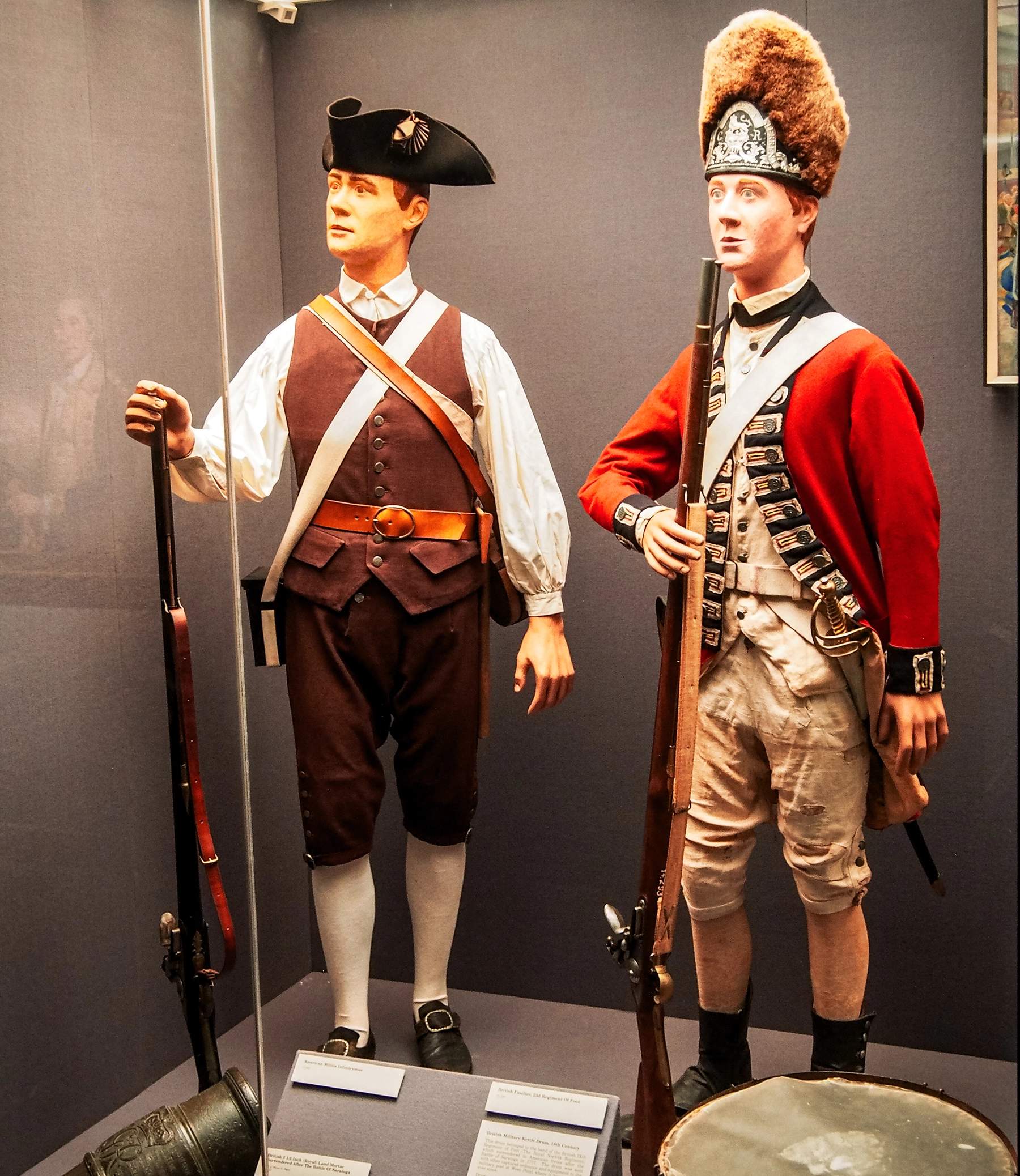
Cavalry units followed other European traditions and wore helmets made of either leather or brass, although this generally depended on the availability of supplies. The American dragoon wore what could be considered the first true American combat helmets, which were modeled after the French design and were likely produced in France.
Equipment of the Continental Army
The Continental Army soldier typically headed into battle armed with a musket, bayonet, and a cutting tool. Soldiers carried a cartridge box that held, you guessed it, the cartridges or lead balls.To speed reloading, soldiers prepared paper cartridges in advance. That involved pouring the powder and rolling the ball into a single unit that could be quickly jammed down the barrel. Yet, powder horns were still a common sight among the soldiers.
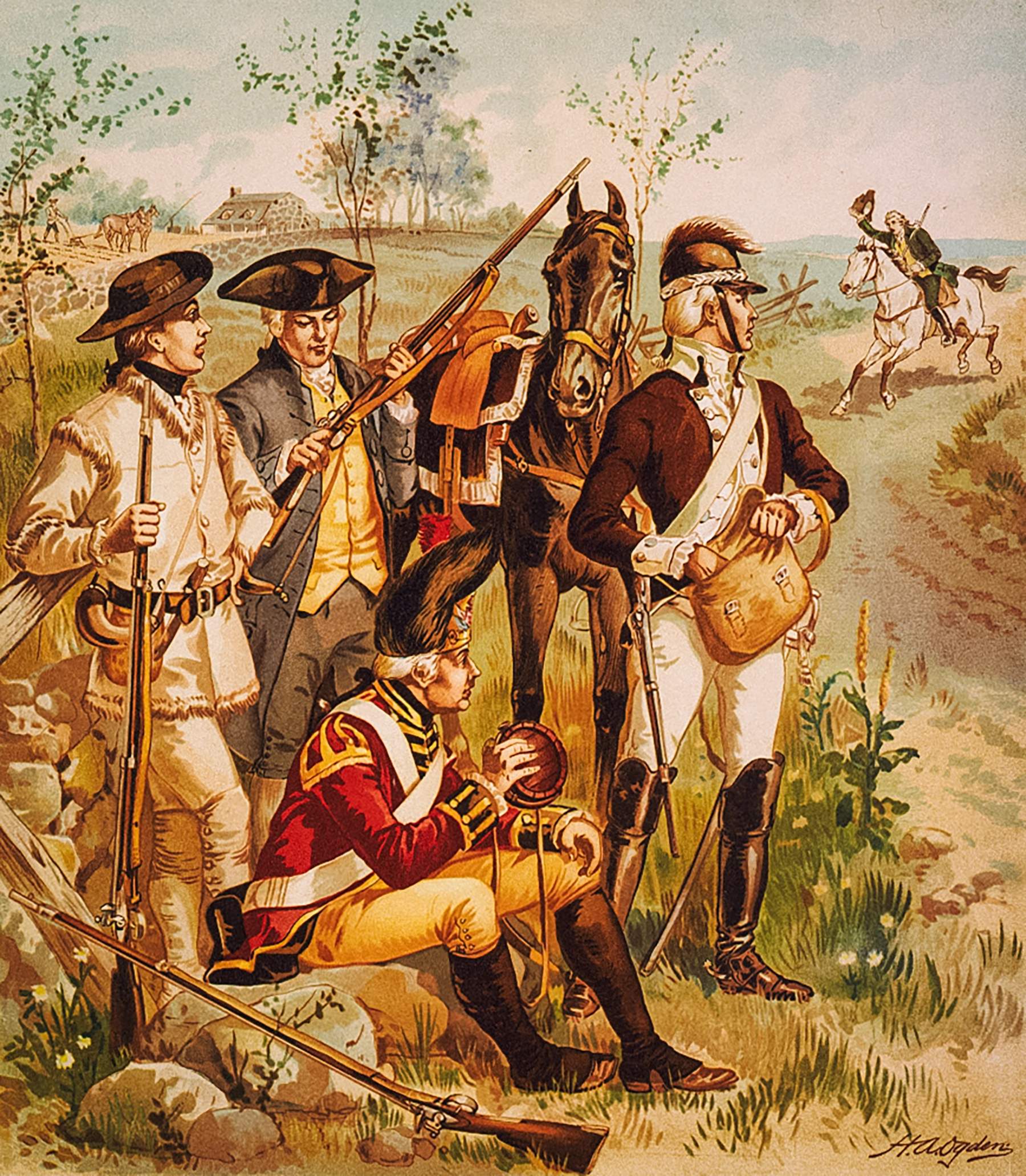
Personal equipment was far from standardized, but while on campaign, it consisted of a wooden canteen, a haversack for food and eating utensils, and a blanket. A knapsack, made of linen or hemp, held items necessary, such as a flint and steel for starting a fire, along with a hunting knife, extra flints for the musket, a razor and possibly a small mirror for shaving.
Though much of this equipment was “officially” issued, soldiers often made due with what was available, and added their own items accordingly. A fishing line and hooks were common, allowing soldiers to catch fish while encamped near water.
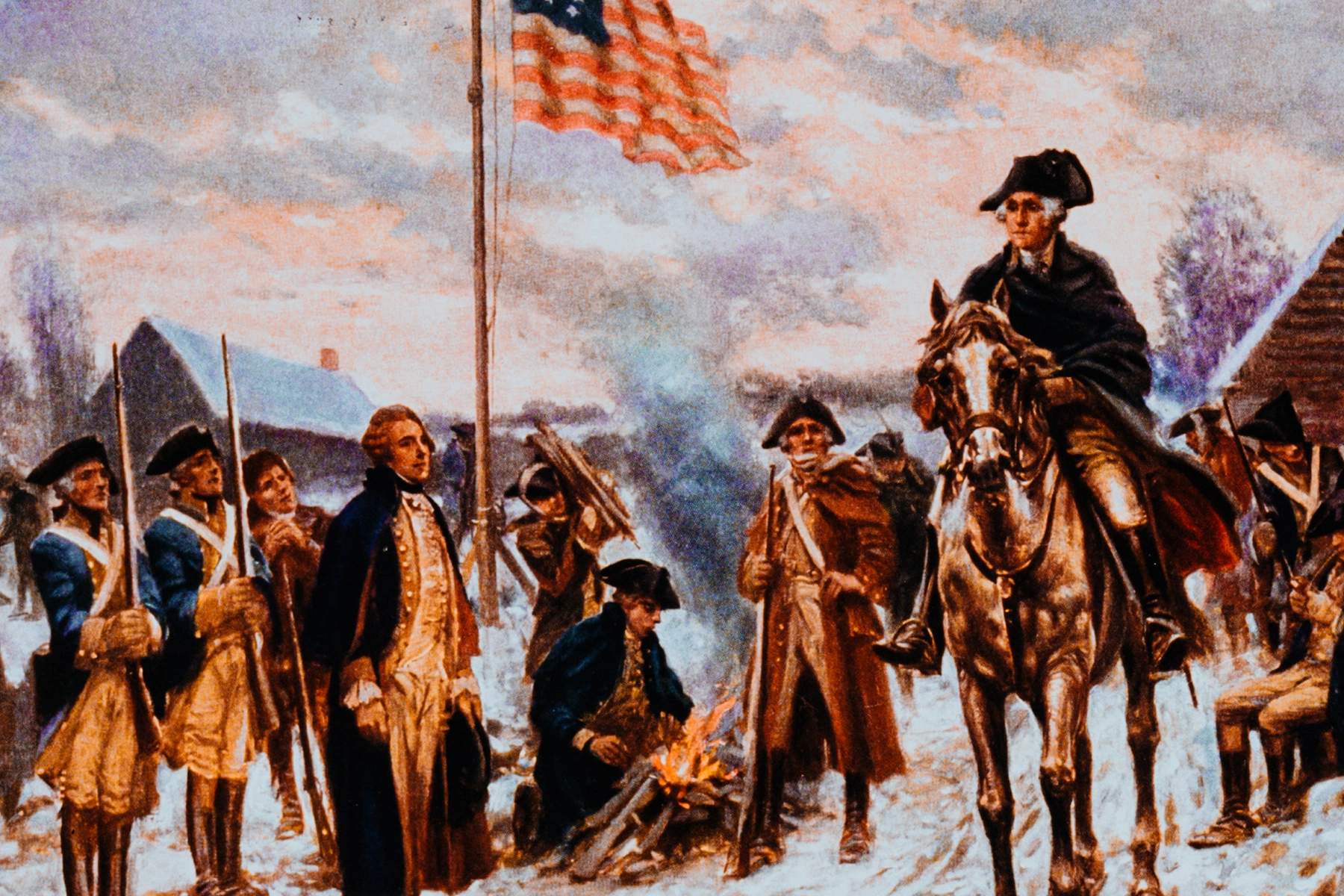
While not a standard issue to every soldier, many opted to carry a tomahawk, hatchet or axe for chopping wood, while officers and cavalrymen were issued with swords. Standardization was far from the norm. The largely agrarian population meant that there simply wasn’t the industry to produce any equipment on scale, so countless varieties were made. This was supplemented by what France was able to provide, while clever resourcing, notably thievery from British supply ships and storehouses, helped fill in the gaps.
It should be noted too that the gear may not seem significant, but it was far from ergonomic or lightweight; combined, it could weigh nearly 50 pounds, almost as much as infantry in the U.S. military carry on short patrols today.
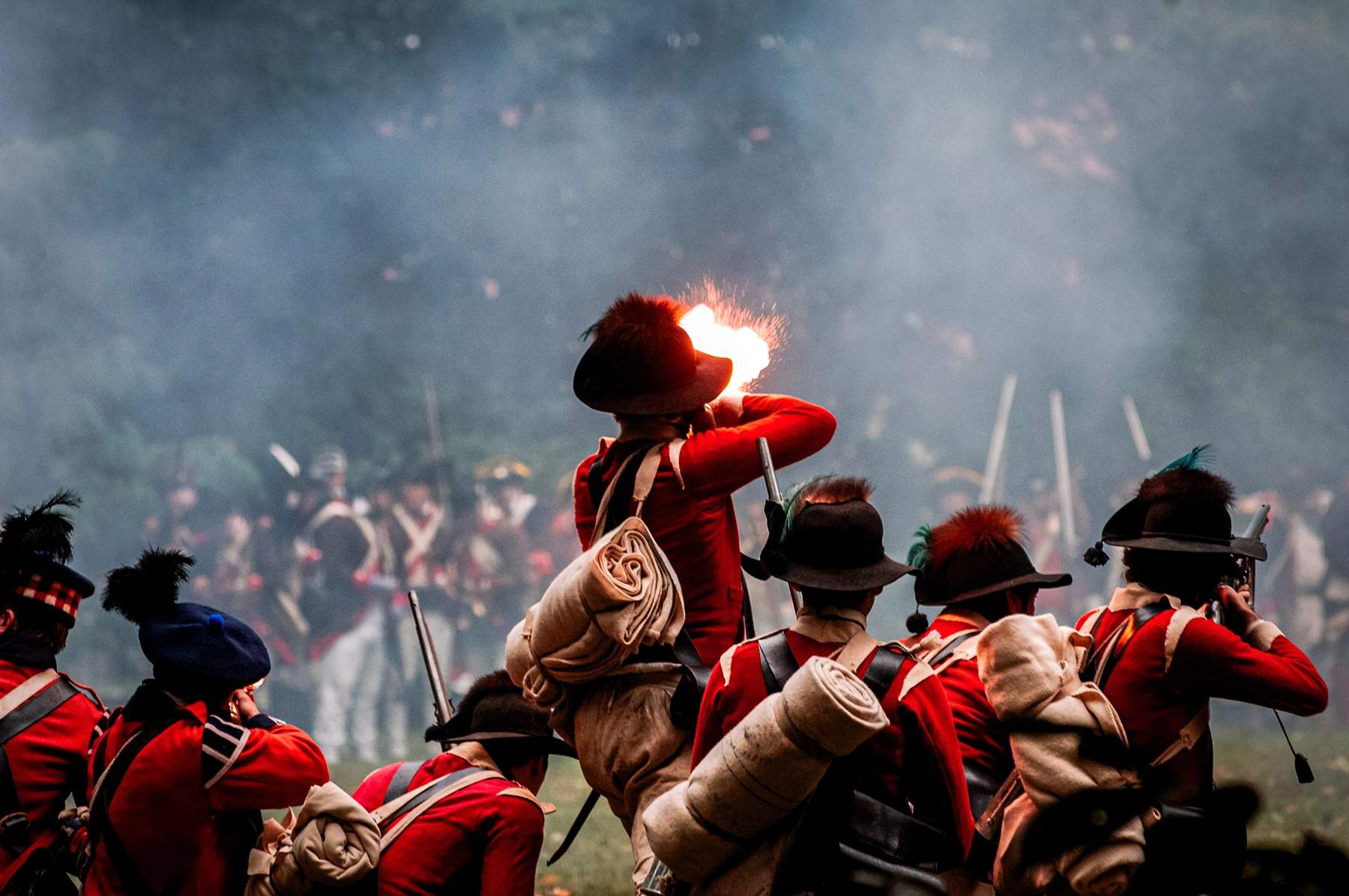
There was some good news for the soldiers of the day. Most of the aforementioned items were all they needed to carry, as it might up what in modern terms was their “Fighting Load,” the items like the musket and cartridge box, while everything else was the “Approach March” load. Other items, the “Sustainment Load,”including a change of clothes, bedding and the gear to cook with were largely carried by unit baggage trains and brought to the camp.
The Army Traveled on its Stomach
It was a generation after the American Revolution that France’s Napoleon Bonaparte reportedly stated that an army traveled on its stomach, but that was hardly news to those who ever led a military force. This was certainly the case during the American Revolution, where feeding the Continental Army became a major undertaking.
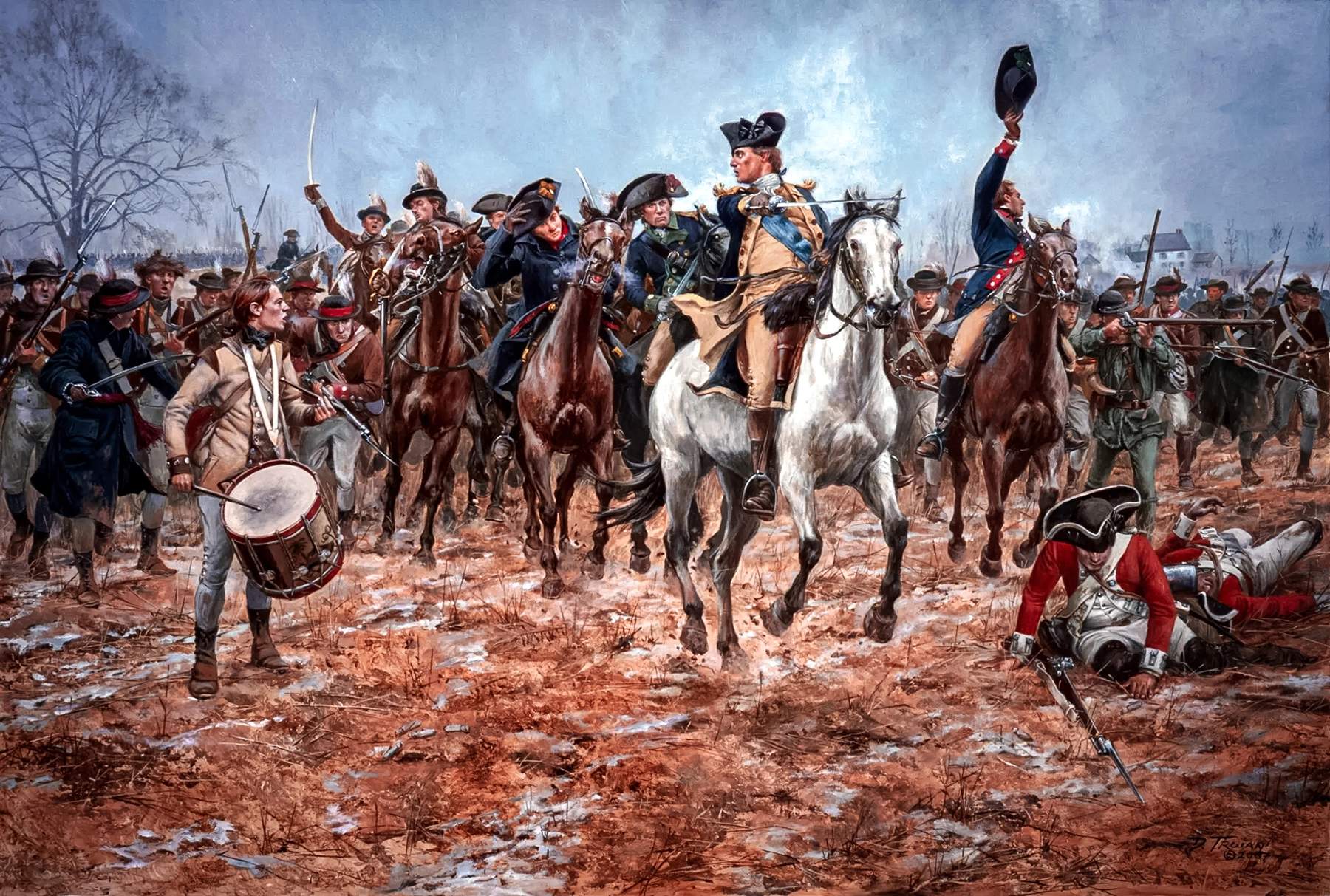
Congress struggled to raise the funds to purchase the sufficient supplies that General Washington requested. His estimates called for 100,000 barrels of flour and 20 million pounds of meat to feed just 15,000 men. Rations were anything close to regular for the first months of the encampment at Valley Forge.
But there was no organized distribution system in place, and limited food resources near the encampment site. The situation was a little better when the army was on campaign. Soldiers were issued with tin kettles for cooking, with a kettle issued to every sixth man. Men often were forced to share their wooden bowls and even the eating utensils.
Today’s soldiers may complain about MREs, but those would be considered practically gourmet when compared to the army rations of the Revolutionary War.
Soldiers of the American Revolution: Small Arms
The American small arms industry was barely in its infancy before and during the Revolutionary War. However, the famed Springfield Armory was founded in 1777 in Springfield, Massachusetts, and helped spawn what would become known as "American Gun Valley" in the late 18th and early 19th centuries. That said, the Continental Army, as well as state militias, relied heavily on imported muskets, primarily from France.
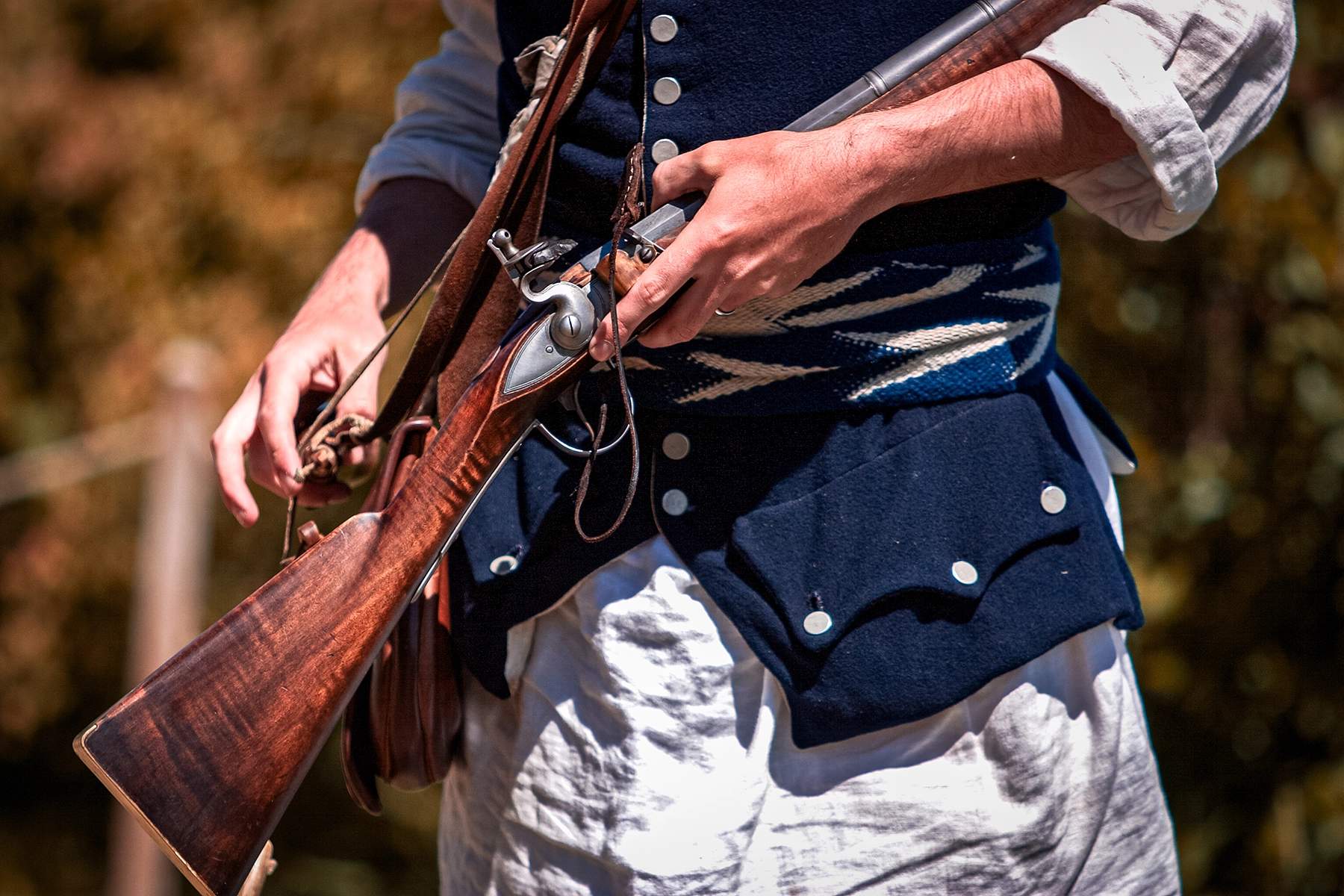
Most American soldiers carried smoothbore flintlock muskets, including the British Land Pattern Musket, more commonly known as the "Brown Bess, as well as a variety of French- and Spanish-made muskets. Yet, it would be a safe bet to suggest the Brown Bess fired that first shot heard round the world.
As the war progressed, the colonial forces acquired Dutch and even Prussian muskets, while domestically produced versions (referred to as the "Committee of Safety muskets") were made from a combination of American and European parts.
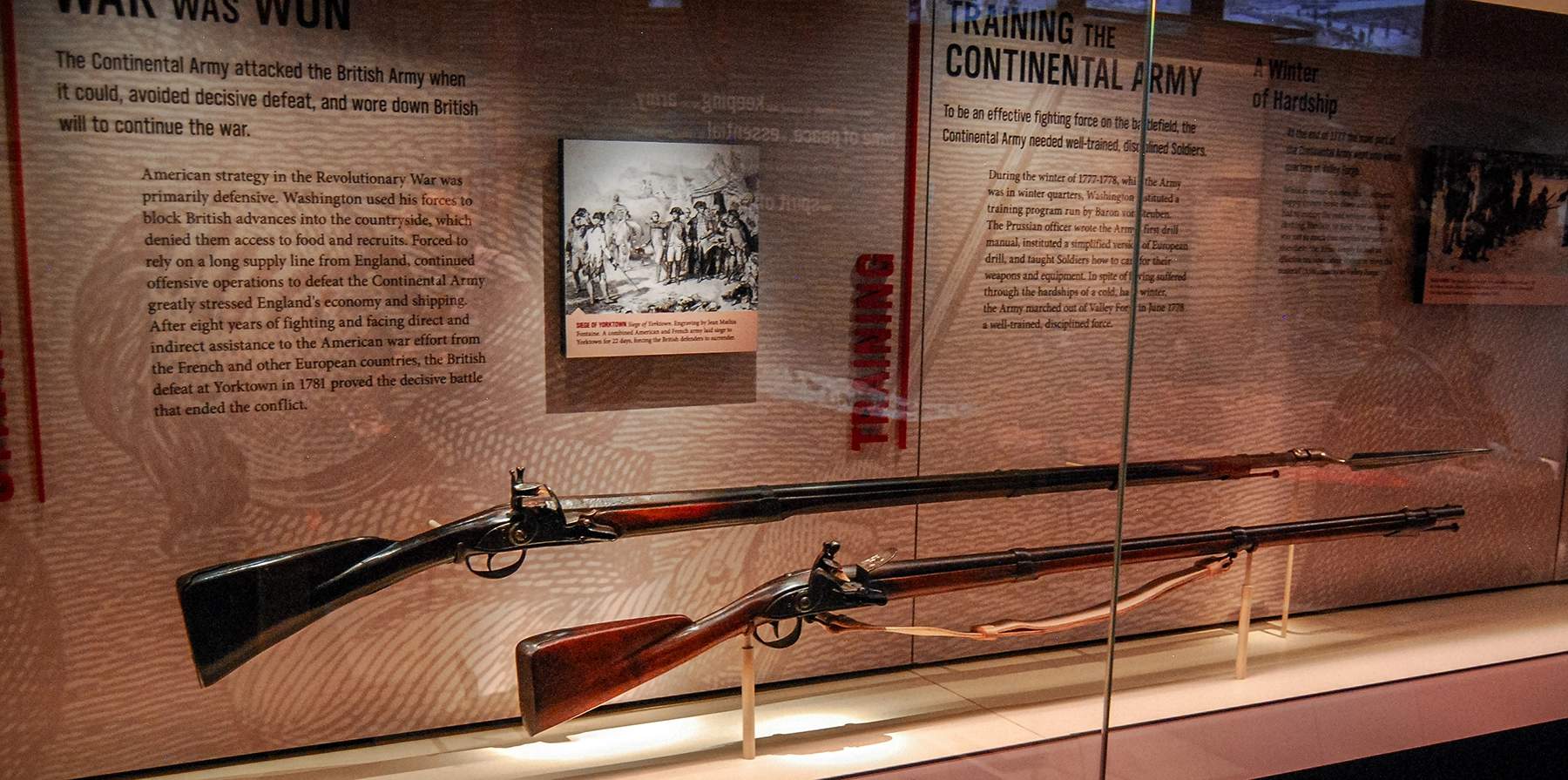
These efforts ensured that the men could be armed, but they also resulted in a wide range of different types and sizes of calibers. There were efforts to standardize the muskets by regiments; however, even by war's end, it remained anything but a standard affair.
The two most common chamberings were .75 caliber for the British “Brown Bess” and .69 caliber for the French-made Charleville muskets. Even back then, adjustable leather slings allowed these muskets, usually around 60 inches long in total, to be slung over the shoulder.
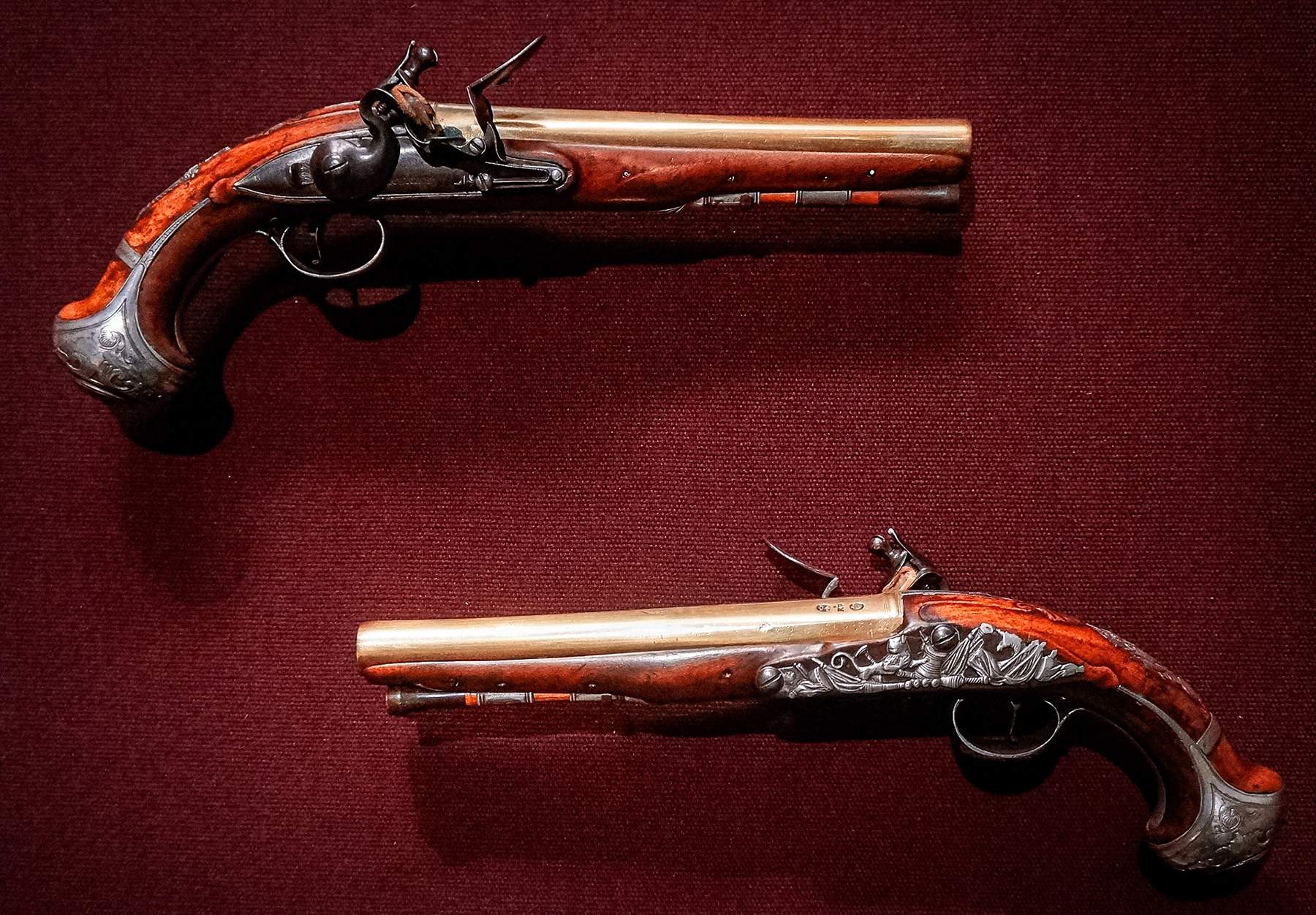
The American Continental Army also made some use of rifled muskets, which were introduced in the colonies circa 1700 by German and Swiss emigrants. These long guns had a greater range and were more accurate than the smoothbore muskets, but they required approximately three times as long to load due to the rifling, which required a tighter-fitting ball, which made them much more difficult to push down the barrel with a ramrod, especially a barrel that was already fouled from several shots.
Also, like muskets, these early rifles were also prone to being rendered inoperable in adverse weather conditions. Moreover, early rifles weren’t standardized, so they couldn’t be fitted with a standard bayonet, which put the user at a serious disadvantage.
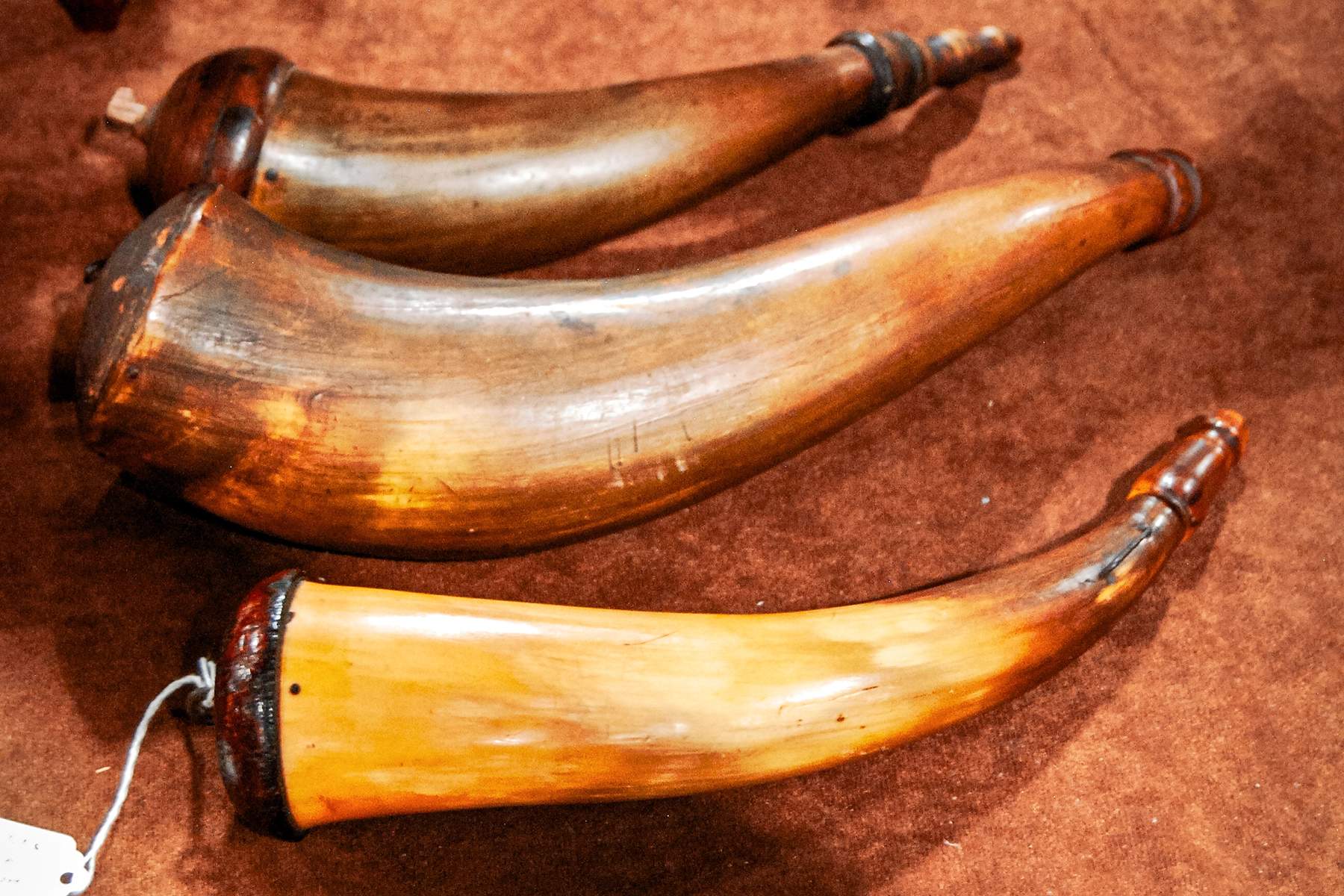
Riflemen, therefore, could neither stand nor charge in the line of battle, and as a result, the rifle, despite some noteworthy advantages, was essentially removed from general service by 1781.
So, for the vast majority of soldiers on all sides of the war, the smoothbore musket was the primary weapon. It was versatile, faster to load, easier to make ammo for on the move, and it was as reliable as firearms came at the time.
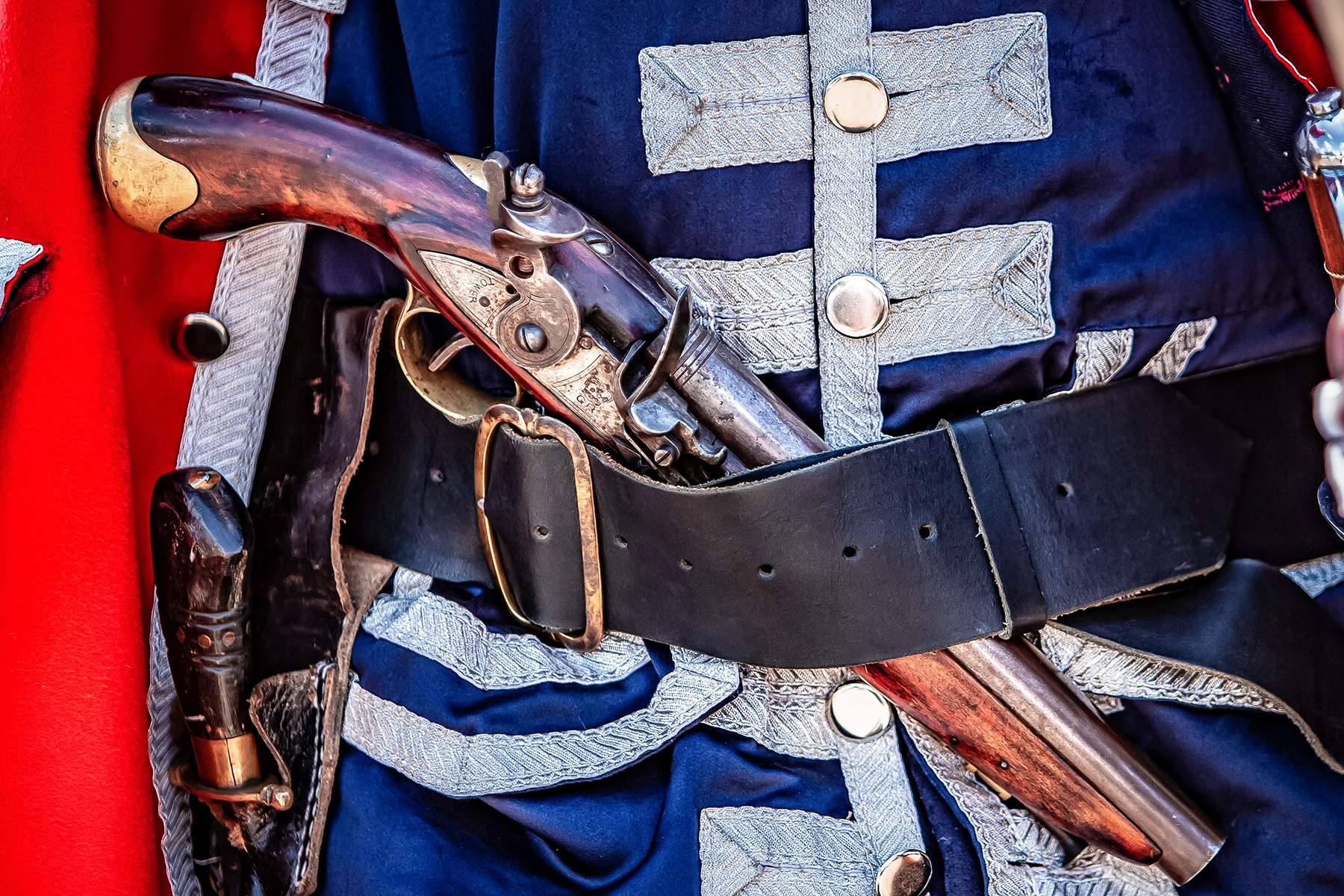
But what about “sidearms?” Flintlock pistols were used primarily for personal purposes, but were akin to privately purchased sidearms used in later American wars. Formally, officers and men of higher stature carried pistols. The guns had an effective range of, at most, 20 feet, while the loading time still limited the user to firing just two or three rounds per minute. As a result, pistols were seen, essentially, as a last resort weapon.
Officers and even some NCOs carried swords and/or espontons (half pikes), while most soldiers, apart from the aforementioned riflemen, relied on the bayonet in combat as the ranks closed. Due to the differing sizes of the calibers of the muskets, the bayonets were tailor-made primarily for the particular firearm.
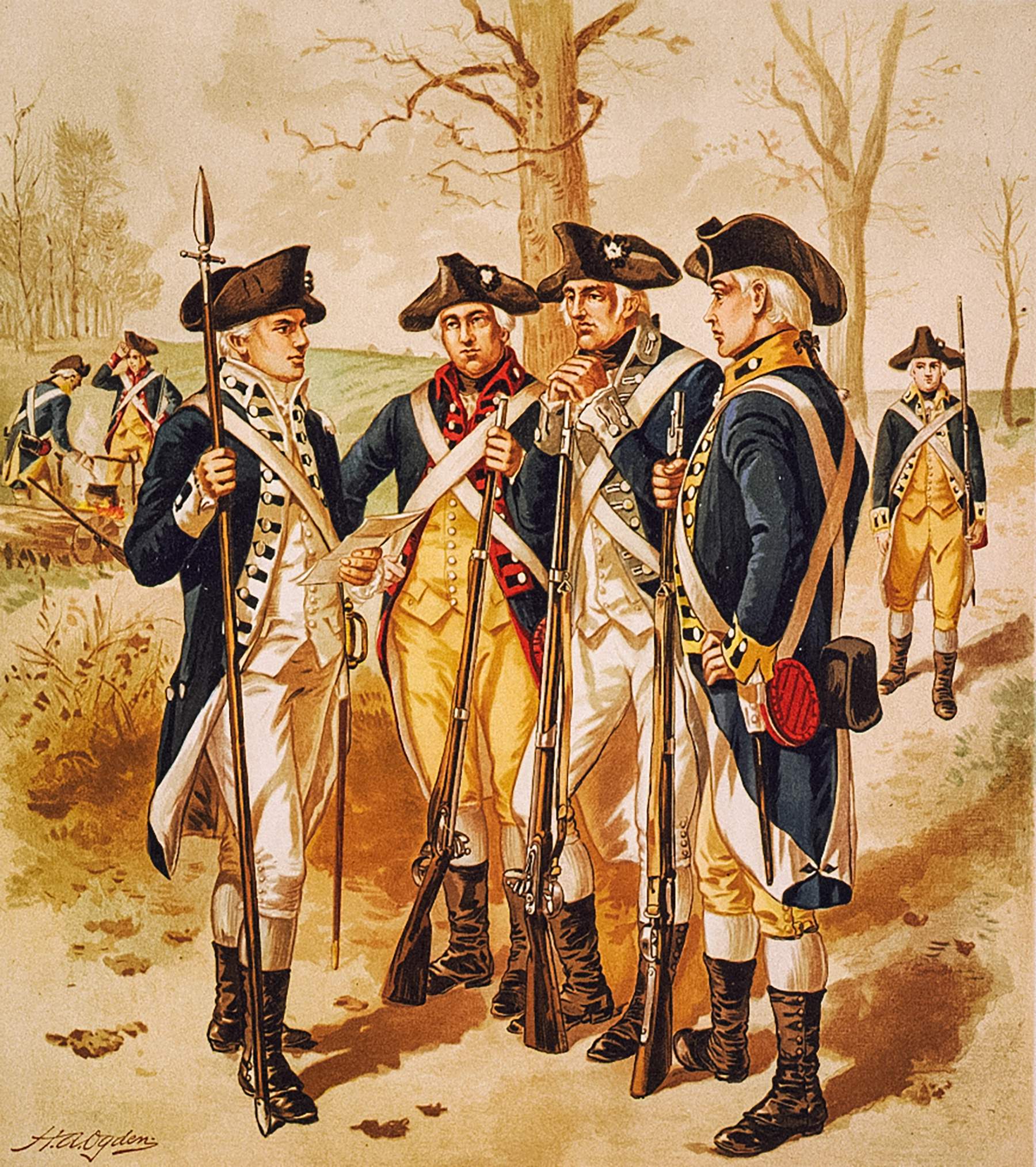
By war’s end, the Continental Army transitioned from a ragtag group of rebels to a truly professional military force. With aid from France, Spain and the Netherlands, a developing local industry and sheer determination, these original “Boys in Blue” were better equipped and armed, and most important of all, proved capable of defeating the most powerful army on the battlefield and earning a grateful nation its independence.
